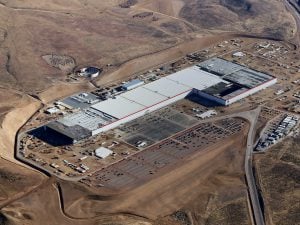On the day that Greenpeace published a report revealing tens of thousands of children across the UK are being exposed to illegal levels of air pollution, a group of city leaders and financiers convened in London to discuss the role of cities in cutting carbon emissions and delivering sustainable infrastructure.
The conference, held at City Hall and organised by C40 Cities (a coalition of 91 cities that have pledged to tackle climate change), focused on the need to mobilise billions of dollars of private capital for low carbon infrastructure, worldwide.
Currently, 75% of C40 Cities’ sustainable projects (in transport, energy and waste disposal) are funded by the public sector, indicating a huge gap in the provision of private capital.
Given their density, cites are the main source of greenhouse gases emissions but they are also particularly vulnerable to extreme weather events caused by climate change, including floods, droughts and heatwaves.
City leaders are central to international efforts to combat climate change on the ground. And they recognise that they cannot rely on action at the national or international level.
Since taking office, the Trump administration has waged war on climate action with attempts to cut significant funding from NASA climate research and the Environmental Protection Agency, whilst seeking a repeal of the Clean Power Plan. It is also threatening to withdraw billions of dollars in climate funding to the UN. Meanwhile, in Europe, G20 ministers have voted to remove climate financing from the latest draft statement, three months before the G20 summit is held in July.
The response to this threat from cities has been to double down and take ownership of their future development.
“Leadership on climate change is devolving, most visibly at the city level,” said Nick Hurd, UK Minster for Climate Change and Industry.
“[Worldwide] leadership is shifting, it is becoming increasingly collaborative. Cities need access to new solutions which are cleaner and better than business as usual. That [creates] huge pressure to ensure innovation comes to market as soon as possible,” he added.
The minister asserted the UK’s commitment to climate action was “stronger than ever” amid speculation over the future of the country’s industrial strategy following its exit from the EU.
Ani Dasgupta, global director of the WRI Ross Centre for Sustainable Cities, said: “Our interaction with cities shows that US cities are stepping up. Cities across the world have been more progressive than national government on climate policy – it’s a long-term trend.”
On the clock
According to a recent report from C40 Cities and Arup, US$375 billion (2.6 trillion yuan) is needed to finance investment in low carbon infrastructure by 2020 in order to keep global temperatures within 2C of preindustrial levels. A seemingly impossible target.
Minister Hurd warned that by 2050 two thirds of the world’s population will live in cities, and that decisions made around infrastructure in the next five years will determine whether countries meet commitments set out in the Paris Agreement.
Mark Watts, executive director of C40 Cities, said that action by cities could deliver 40% of the emissions cuts needed to meet the Paris goal of limiting warming to 2C. He also underscored the economic opportunities of investing in sustainable development.
“There are 3,000 project pipelines of [C40] cities, 700 of which are in buildings. And we have only received costings for 15% of those. This means there is a 15.5 billion investment opportunity,” he said.
In the UK, a plan to introduce 45,000 electric buses over the next 4-5 years represents an investment opportunity of over 10 billion pounds. While a new battery laboratory in Coventry that is expected to open later in the year will provide hundreds of local jobs.
Mind the gap
The obstacles to channelling private capital include rapid urbanisation – ceaseless demand causing a shortage in finance – political instability and regulatory constraints on financial flows.
Valerie Smith, head of corporate sustainability at Citibank pointed out that in developing countries access to finance is being impeded by debt ceilings that curb the amount of government borrowing. Whereas in developed countries, the problem may be a lack of credit rating, which is needed to unlock bank lending.
Solutions
Financiers called for more “bankable” business models, financial deregulation and incentives, such as tax breaks for investors. City leaders called for closer collaboration between different levels of government – community, municipal and national authorities – and assistance in better communicating their needs in financial terms.
Greg Chant Hall of Skanska, a UK building contractor, stressed the need for project leaders and investors to take a long term view when assessing the balance of risks and rewards in buildings investment, and of applying new metrics such as health care benefits and the productivity of employees.
Examples of cities that have successfully used public funding to mobilise private capital were listed, including Barcelona’s scheme to use parking fees to fund its cycling system (which is run by a private company), and Medellin’s use of an air pollution tax, also to pay for its cycling system.
By 2020, 60% of China’s population will be urbanised so its need to invest in sustainable infrastructure is paramount.
Cities are crucial to meeting the Paris Agreement goals but it remains to be seen whether they can work with private capital to successfully decarbonise existing activities and develop sustainably, while also managing the pressures of urbanisation and population growth.







